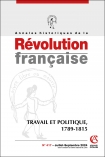
Histoire, Economie et Société (2/2023)
Pour acheter ce numéro, contactez-nous
Recevez les numéros de l'année en cours et accédez à l'intégralité des articles en ligne.
Entre la défaite de Mohács en 1526 et le traité de Spire en 1571, la Hongrie connaît la désagrégation de l’État médiéval, la conquête ottomane et la division de l’ancien royaume en trois parties distinctes. Si l’éclatement débute dès le lendemain de Mohács avec la double élection de Ferdinand Ier et de Jean Ier, durant plusieurs décennies, la partition n’est considérée que comme temporaire, n’entamant pas l’unité théorique des territoires de la Sainte Couronne. Néanmoins, au prix de choix difficiles pour les Ordres hongrois, et d’une lutte acharnée entre deux souverains, la principauté de Transylvanie émerge, à la fois État nouveau et persistance de la Hongrie médiévale.
Between the defeat of Mohács in 1526 and the Treaty of Speyer in 1571, Hungary experienced the disintegration of the medieval state, the Ottoman conquest and the division of the ancient kingdom into three distinct parts. If dislocation on the aftermath of the defeat of Mohács with the double election of Ferdinand I and John I, for several decades the partition was considered only temporary, as if it didn’t affect the theoretical unity of the territories of the Holy Crown. Nevertheless, at the cost of difficult choices for the Hungarian Orders, and a fierce struggle between two sovereigns, the Principality of Transylvania emerged, both a new state and the persistence of medieval Hungary.

